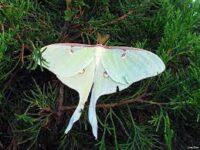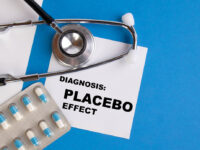For thousands of years, humans have looked to nature for ways to cure disease. Ancient civilizations around the world relied on plants, animals, and fungi to treat every malady from headaches to heart disease. Even as our ability to develop synthetic drugs has increased, natural products remain crucial in the field of medicine. Between 1981 and 2019, nearly one-third of drugs approved globally were derived from natural sources. Scientists have discovered biologically active compounds in a diverse range of organisms, but most research has focused on plants, leaving many other life forms unexplored. In particular, insects are a promising yet underutilized source of biologically active molecules. Despite being relatively under-researched, insect-derived molecules have shown promise in a wide range of applications in medicine.
“Insects are a promising yet underutilized source of biologically active molecules”
One insect-derived molecule of interest comes from the pesky bite of the mosquito. Mosquitoes employ anticoagulants to prevent clotting when feeding on their victims’ blood for long periods of time. When mosquitoes bite, they puncture their victims’ blood vessels with their proboscis, or feeding organ, and excrete a small amount of saliva, which is chock-full of molecules that prevent blood clotting. One of these molecules is anopheline antiplatelet protein, or AAPP. Typically when a blood vessel is damaged, platelets aggregate on the blood vessel wall, creating a plug that prevents blood from escaping. AAPP binds to collagen, a protein which makes up much of the blood vessel wall and prevents platelets from adhering to it. This stops the damaged blood vessel from being sealed and allows the mosquito to continue feeding.
Mosquito-derived anticoagulants like AAPP could potentially be utilized to treat dangerous blood clots like those that cause heart attacks and strokes. These molecules may also have applications in the field of medical devices. When devices are implanted in the body, they can trigger blood clotting, which increases the chance of the body rejecting the device and can damage cells. Coating devices with anticoagulant proteins derived from mosquito saliva may prevent this clotting and could be an alternative to currently used anticoagulants such as heparin, which can cause negative immune responses.
Scientists have identified another biomolecule with disease-treating potential in bees. The protein melittin, the primary component of honey bee venom, demonstrates antiviral, antibacterial, and, perhaps most intriguingly, anti-tumor activity. Melittin is able to kill more than fifteen different types of cancer cells, largely due to its ability to disrupt the membrane of these cells, as demonstrated in a study at the Free University of Berlin. Positively charged melittin binds to cell membranes, which are negatively charged, and creates pores within them. This causes molecules to leak out of the cell, eventually leading to cell death. Healthy cells are more likely to be resistant to pore formation, so melittin primarily harms the more vulnerable tumor cells. However, some damage to healthy cells still occurs, which can cause severe negative reactions. To reduce the toxicity of melittin, researchers are working to combine the molecule with delivery methods that are able to more specifically target tumor cells.
Insect-derived molecules have also shown promise as stabilizers. Vaccines that are made from weakened or killed viruses must be stored at very low temperatures. In order to infect cells, proteins on the surface of viruses must bind to cell receptor proteins. When not kept cold, the viral proteins denature, or unfold, making them unable to bind to the proper receptors and preventing effective vaccination. This phenomenon makes the distribution and storage of vaccines difficult, especially in developing nations, as constant refrigeration is required. However, proteins found in silkworm silk may provide a solution to this challenge. In 2014, researchers in Japan and Australia found that at elevated temperatures, the fibrous proteins in the silk of the domesticated silk moth can help stabilize viruses. This may be because the silk proteins hydrogen bond to the proteins on the viral surface, making them more compact and harder to unfold. Scientists hope to harness this property to reduce the need for vaccine refrigeration, thus making vaccines more accessible to those in areas that lack the infrastructure to maintain the cold temperatures currently required.
“In insects, we may find life-saving treatments for blood clots, cures to cancer, and strategies to bring vaccines to more people than ever before.”
Evolution is a fantastic problem-solver. Despite the sophisticated techniques of modern science and the ability to create synthetic molecules, scientists continue to turn to natural molecules, honed by millions of years of evolution, to cure disease. In insects, we may find life-saving treatments for blood clots, cures to cancer, and strategies to bring vaccines to more people than ever before. The wealth of knowledge contained in insects, and all other organisms, underscores the importance of conservation. When species are lost, a plethora of potential solutions to human problems are lost with them.






